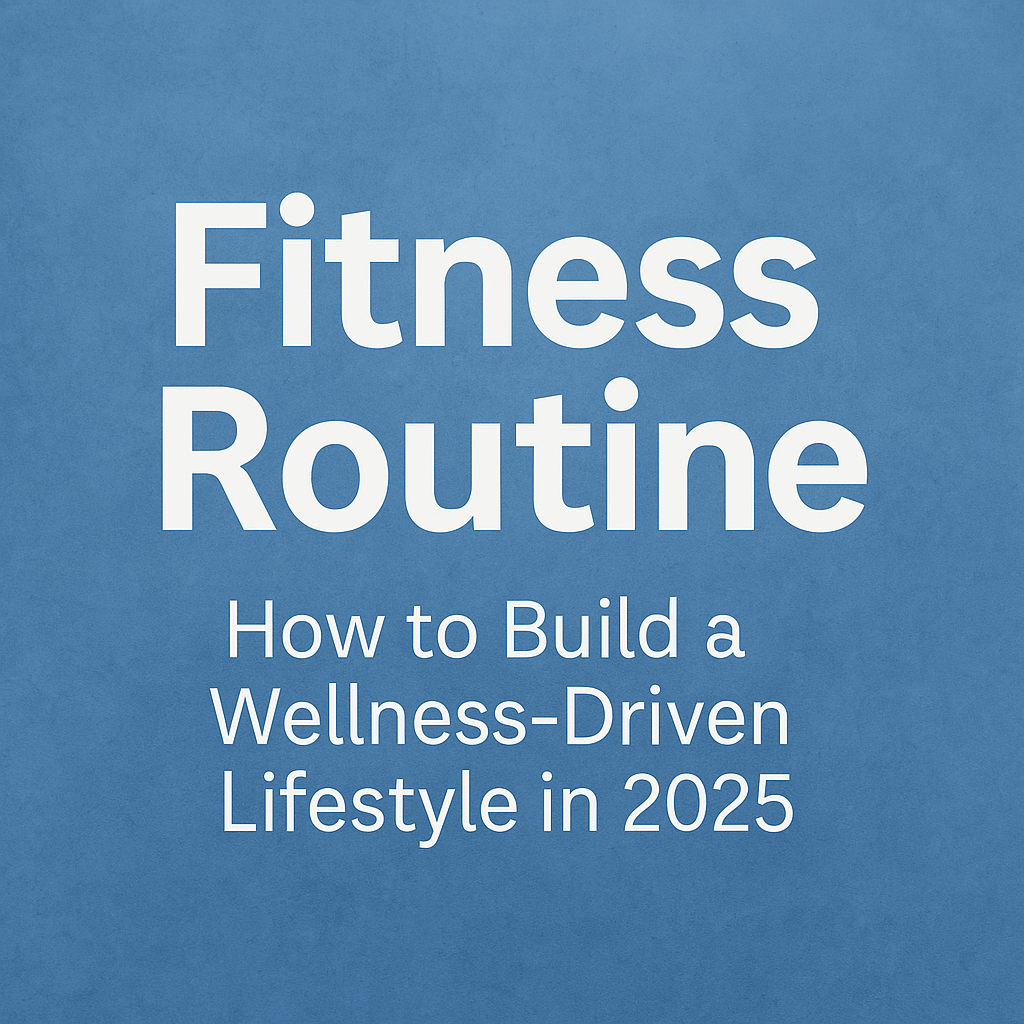Introduction
Creating a consistent fitness routine in 2025 is no longer just about going to the gym—it’s about crafting a balanced, personalized approach to physical and mental well-being. From sunrise rituals and high-tech trackers to functional workouts and recovery science, today’s fitness landscape is smarter and more holistic than ever. This guide dives into the most exciting trends—like Functional Fitness, Gamified Workouts, and Biohacking Fitness—to help you build a wellness lifestyle that motivates, sustains, and empowers you. Whether you’re a beginner or rebooting your routine, here’s everything you need to thrive.
Related Read: Workout Nutrition Guide: Fuel Your Fitness
1. Embracing Functional Fitness
If your goal is to move better, feel stronger, and prevent injury, Functional Fitness should be at the heart of your fitness routine. Unlike traditional isolated exercises, functional movements train your body to perform real-life activities—picking up a box, climbing stairs, or playing with your kids—with greater ease and safety.
Why it’s trending:
People are shifting away from machines and rigid gym schedules toward dynamic, efficient training that improves quality of life.
Try this:
- Start with compound moves: squats, lunges, planks, and kettlebell swings.
- Focus on core strength and balance.
- Train 3–4 times a week for 20–30 minutes using resistance bands or bodyweight.
2. The Rise of the Morning Routine for Fitness
Early birds are taking wellness to the next level. A structured morning routine for fitness—often beginning as early as 4 or 5 a.m.—is one of the most talked-about health trends of 2025. It’s not just about working out—it’s about jumpstarting the day with mindfulness, movement, and intention.
What’s included?
- Hydration, light stretching, breathwork, and sometimes even cold exposure or journaling.
- Many are influenced by the rise of biohacking fitness, aiming to optimize brain and body performance from the moment they wake up.
Practical tips:
- Wake up at a time that suits your lifestyle and sleep needs.
- Begin with 5–10 minutes of gentle mobility or yoga.
- Add a short workout, meditation, or gratitude journaling to feel more grounded and energized.
3. The Role of Fitness Apps 2025
Welcome to the digital age of training. Fitness Apps in 2025 are smarter, more personalized, and gamified to keep users engaged and motivated. They track everything from reps and heart rate to sleep and recovery—offering tailored insights and plans.
Why it matters:
Gamification has made workouts feel less like a chore and more like a challenge you want to complete. These gamified workouts reward consistency, effort, and progress with points, badges, and virtual high-fives.
Try these tools:
- Strava for endurance athletes.
- Peloton and Apple Fitness+ for instructor-led sessions.
- Fitbod for building a personalized workout plan.
- Zombies, Run! for turning your cardio into a fun, immersive mission.
4. Recovery in Workouts: The New Priority
A strong fitness routine isn’t just about the sweat—it’s about the rest. Today, recovery in workouts is seen as essential for progress, injury prevention, and mental clarity.
Why it’s trending:
We now understand that overtraining can lead to burnout and setbacks. Rest, sleep, and active recovery days are crucial for long-term results.
How to recover smart:
- Include low-intensity movement (like walking or yoga) on rest days.
- Use foam rollers, massage guns, or hot/cold therapy after intense sessions.
- Prioritize 7–9 hours of sleep nightly.
- Stay hydrated and refuel with protein and healthy carbs.
5. Designing a Personalized Workout Plan
No two people have the same schedule, goals, or energy levels. That’s why a personalized workout plan is one of the most effective tools for fitness success in 2025. It keeps you focused on your needs—not someone else’s TikTok routine.
How to build your plan:
- Define your goals: weight loss, muscle gain, flexibility, or general wellness.
- Choose a weekly structure you can maintain (e.g., 3 strength, 2 cardio, 1 recovery).
- Blend training styles to keep it fun: HIIT, Pilates, strength training, functional movement.
- Track what feels good and adjust every 4–6 weeks.
6. Social Media Fitness Trends: Helpful or Harmful?
With millions of daily views, social media fitness trends are shaping how people view health and wellness. From viral 10-minute ab workouts to “What I Eat in a Day” reels, the influence is real—but not always realistic.
The good:
- Quick inspiration, motivation, and exposure to new styles and routines.
- Access to certified trainers and diverse fitness communities.
The caution:
- Many trends are unverified or unsustainable for the average person.
- Comparison can lead to demotivation or unrealistic expectations.
Smart approach:
- Follow trainers with credentials.
- Use content for ideas, not blueprints.
- Filter out noise and stick to your wellness lifestyle goals.
Conclusion
Your ideal fitness routine is one that energizes your body, strengthens your mindset, and fits your life—not someone else’s. By embracing trends like Functional Fitness, tech-powered Fitness Apps in 2025, personalized planning, and a strong focus on recovery in workouts, you can create a sustainable path to better health. Add in a mindful morning routine for fitness, engage with social media fitness trends wisely, and explore the excitement of gamified workouts and biohacking fitness—and you’ve got a routine designed not just for today, but for your future self.
So don’t wait for Monday. Start now. Your best self is just one workout closer.
Read More: 13 Benefits of Workout in the Morning

